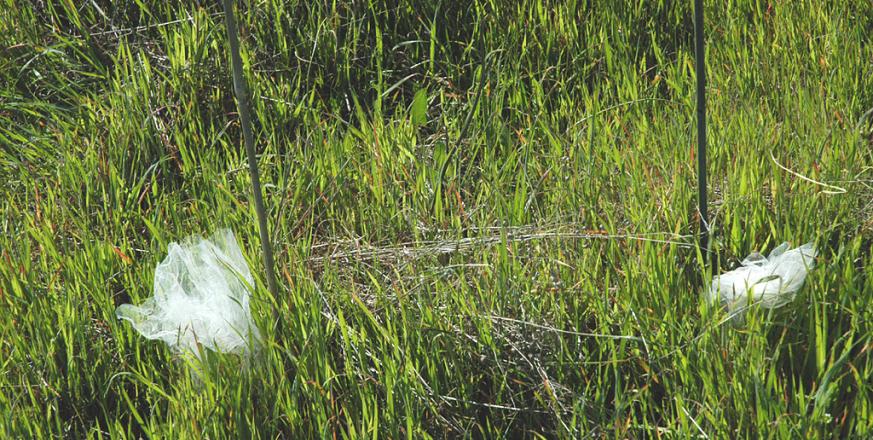Control of yellow starthistle by herbivory

Summary
This project aims to test whether and how herbivory by slugs and snails controls yellow starthistle (Centaurea solstitialis)populations. It consists of pairs of self-contained starthistle gardens in 20 locations around JRBP. Half of the locations are in existing starthistle patches (identified by the skeletons of dead starthistle), and half are in nearby, paired uninvaded areas. The gardens consist of pairs of 10 plantings of starthistle seeds, with one set of 10 protected from slug herbivory by a plastic collar around the base attached to a closed "tent" of mesh above it. For the other set of 10, the tent and collar are not attached. Claire Lunch is monitoring germination and levels of herbivory on the plants from October 2004 through early April 2005, at which time all plants will be removed. Plants do not form viable seed until June at the earliest, so removing the plants in April will prevent any propagation from occurring.
The study was inspired by Dukes' results from an experiment conducted within the Global Change Experiment, which suggested that slugs and/or other small herbivores entirely consume unprotected starthistle seedlings in the area of Jasper Ridge occupied by the JRGCE. This was a surprising finding, as starthistle forms dense stands nearby and in other parts of the preserve. This study is designed to distinguish several possible explanations for this result: 1) Starthistle forms dense patches only where populations of herbivores (and rates of herbivory) are low, 2) herbivory affects seedlings but where seed input is high enough, enough starthistle plants survive to maintain a dense population, 3) herbivory is high only where seedling populations are high, so individual starthistle plants can get established easily in new locations, 4) herbivory was unusually high in the previous study, due to weather or year effects, or to random variation.



